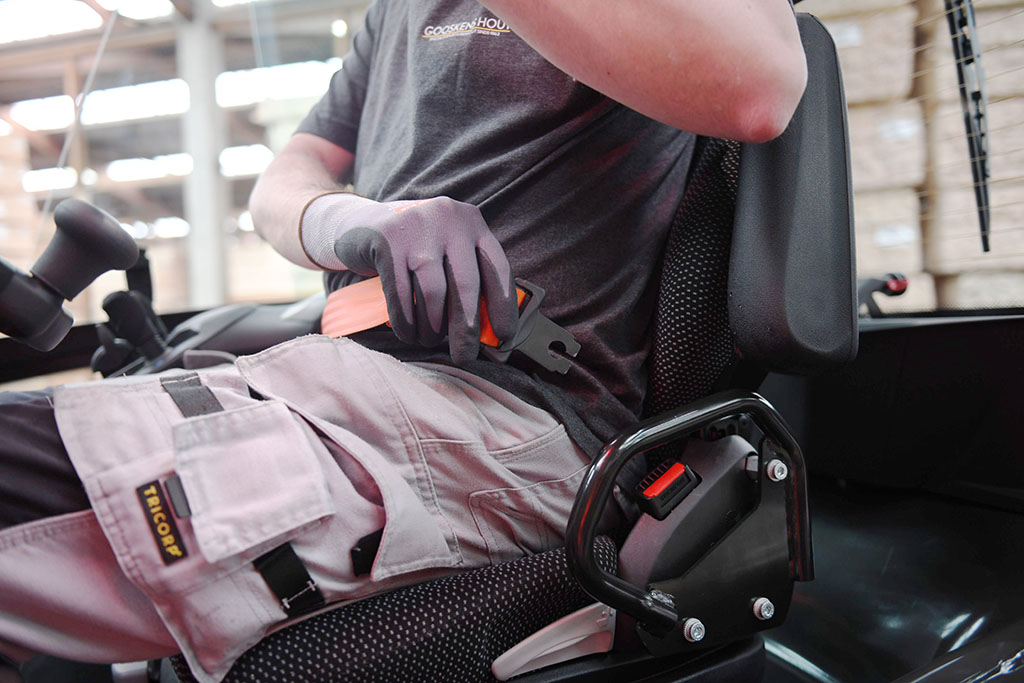The law demands them. Forklift operators often resent them. But seat belts save countless lives and, if you are responsible for handling operations, it’s down to you to make sure they’re worn.
Policing that can be a thankless task but a vital one. For operators of forklifts, failing to wear a seat belt can result in terrible injuries and even death. For you as an employer, failing to protect those working on and around forklifts can lead to prosecution, huge fines, court appearances, long-term reputational damage and invalidation of insurance cover.
Here’s an example of what can happen… and the consequences:
The difference between life and death
Accidents can’t always be avoided, but very often, quite simple precautions can make a huge difference in minimising life-changing consequences.
Take tip-overs. It’s a chilling fact that tipping accidents are the single most common cause of deaths among forklift operators (42%*). In almost every case, the driver was ‘mousetrapped’ between the truck’s overhead guard and the ground, causing massive trauma to the head or upper body.
It happens because human nature compels operators to jump for their lives as the truck starts to tip. Sadly, that almost always results in fatal consequences because they can’t escape by a structure that, in all other circumstances, is there for protection.
However, if they had been retained by a seat belt they would have walked away with bruising and little more.
Overcoming obstacles
The solution – wearing a seat belt – sounds as reasonable as it is straightforward. But, as many managers will confirm, getting operators to comply can be challenging, especially when the pressure is on to work fast and in applications where operators are repeatedly jumping on and off their trucks.
Some operators even attempt to override safety systems, silencing the warning alarm by fastening their seat belts permanently behind them.
Fortunately, there’s a solution that puts safety before convenience.
The no-cheat seat belt — a simple, 3-step solution
All Mitsubishi electric counterbalance forklift trucks are fitted – as standard – with a unique ‘no-cheat’ setting that enables managers to make sure seat belts are always worn. Once that setting has been activated the truck cannot be operated unless 3 steps have been completed.
For more information on “no-cheat” seatbelt solutions contact your local Mitsubishi forklift Truck distributor
In the meantime, you can help prevent tip-overs by ensuring that loads are correctly balanced, and operators don’t turn corners with the load raised, they don’t cut-across ramps, kerbs or other obstacles and that the site is free from debris and potholes.
*European Agency for Safety and Health at Work (EU-OSHA)



